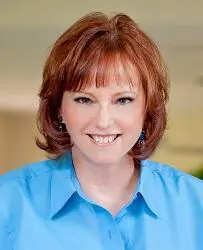
Kathleen Caywood may live next door to her 92-year-old mom, but she still likes to keep tabs on her, especially when Caywood is at work or away for the winter in Florida.
That’s why she recently hired Caregiver Smart Solutions (CSS) to install sensors throughout her mom’s condominium in Pompton Plains, N.J. The sensors are in every room, as well as on the refrigerator, doors and even the coffeemaker. The system, which took one hour to install, passively monitors her mom’s movements and activities. By using a smartphone app or logging onto an online portal, Caywood can make sure her mom has moved from room to room, opened the refrigerator to eat and even brewed her morning cup of coffee. The sensors are also monitored by a central station, which notifies Caywood of any irregularities.
“In every single room, there’s a motion sensor so I know she’s moving around,” Caywood says. “I know everything that she’s doing without being there, no matter where I am.”
A low cost monthly subscription gives Caywood great peace of mind while her mom maintains her sense of independence and dignity.
The system sold by CSS is just one example of a new breed of home technology that’s allowing older homeowners to age in place. And, with the cost of senior housing on the rise—the average asking rates nationally for independent and assisted living in the second quarter of 2018 were $3,285 and $4,901, respectively, according to the National Investment Center for Seniors Housing & Care—this technology offers a viable alternative for the 61 percent of those over age 55 who plan to stay in their homes indefinitely.
The system Caywood purchased is not the same thing as smart-home automation. It doesn’t control lighting, raise blinds or set alarms. It’s a passive system that doesn’t require the occupant to do anything. And it’s a far cry from the iconic “I’ve fallen and I can’t get up” pendants sold by Life Alert.
“Smart homes are fun and exciting, but they’re lifestyle-based,” says Ryan Herd, chief executive officer of CSS. “Our system gives you, the caregiver, relevant information that’s most important to you, such as whether mom got up at a normal time or if she’s moving around the house, opening up the fridge or going to the bathroom.”
One of the problems with a personal emergency response system (PERS), such as a pendant where users need to press a button if they need help, is that people don’t wear them. According to TruSense, a Cincinnati-based company that sells a smart-home monitoring solution for seniors, a recent study showed that 86 percent of people who owned a pendant did not wear it throughout the entire day. The TruSense system, however, combines GPS with a notification system that advises caregivers when the pendant isn’t being worn and also integrates with TruSense Home, a sensor-based solution.
“Anyone who has ordered a PERS wearable device for their loved ones knows the biggest issue is getting them to wear it,” says Rob Deubell, a TruSense senior vice president. “TruSense delivers multiple layers of protection, providing a 24/7 safety net and therefore additional peace of mind for families.”
In case you’re wondering whether these systems really make a difference, Mike Harry has a story to tell you.
“OVAL has demonstrated it can improve lives, even save them,” says Harry, chief executive officer of OVAL Digital, a New York firm that sells a home sensor that monitors and detects changes in motion, temperature, humidity, light and water—and then sends alerts to a caregiver’s phone or email. “One customer purchased OVAL to be more aware of what was going on in his dad’s home. One day, the dad, a senior who was partially immobile and on medication, bumped into or turned down the thermostat to a dangerously low level. Our customer received alerts that the temperature was dropping and called the home, receiving no response. Knowing that something was wrong, he quickly sent a nurse to the home, who found his dad unresponsive. She was able to help resolve the situation successfully.”
Builders are now jumping on the bandwagon as well. Last year, Miami-based Lennar Corp. announced the world’s first Wi-Fi certified home designs that featured home automation and voice control with Amazon Alexa. This allows homeowners to control their lights, front-door lock and thermostat simply by talking to Alexa. Lennar even offers interactive Amazon Experience Centers within select Lennar model homes across the United States. While this is a more active system, rather than sensors, it still allows older homeowners to age in place by automating home functions.
“One of the most undervalued, but helpful, functions of a voice-controlled device for seniors aging in place is in the early morning and late at night when it’s hard to get hands, knees and feet moving,” says Lisa Cini, a designer in Columbus, Ohio and author of The Future is Here: Senior Living Reimagined. “Having a voice-controlled Alexa, Google Home, Ring or Nest can help you with reminders, making phone calls, locking doors or even ordering dinner.”
Even Best Buy is offering affordably priced solutions for caregivers. The retailer recently introduced its Assured Living program, which utilizes smart technology to provide real-time alerts to family members in the event of a fall or missed medication, as well as insight into activity levels. The system costs $29.99 per month for monitoring, along with an initial one-time installation fee of $449.95, which includes a control panel, motion sensor, bed-pressure sensor, door sensor and medical alert device.
“It’s peace of mind,” Caywood says of the system she purchased. “I don’t always have to call my mom or stop by. I can just look at the phone or computer and know she’s okay.”

Robyn A. Friedman is an award-winning freelance writer and copywriter who has been covering the real estate and housing industries for over two decades. She writes the “Jumbo Jungle” column for The Wall Street Journal, is a real-estate and personal-finance columnist for City & Shore magazine, covers celebrity real estate for the South Florida Sun-Sentinel and also contributes regularly to Commercial Property Executive, Multi-Housing News and numerous other publications.
 Architect and Homebuilder Phil Kean: The New Home Source Interview
Architect and Homebuilder Phil Kean: The New Home Source Interview